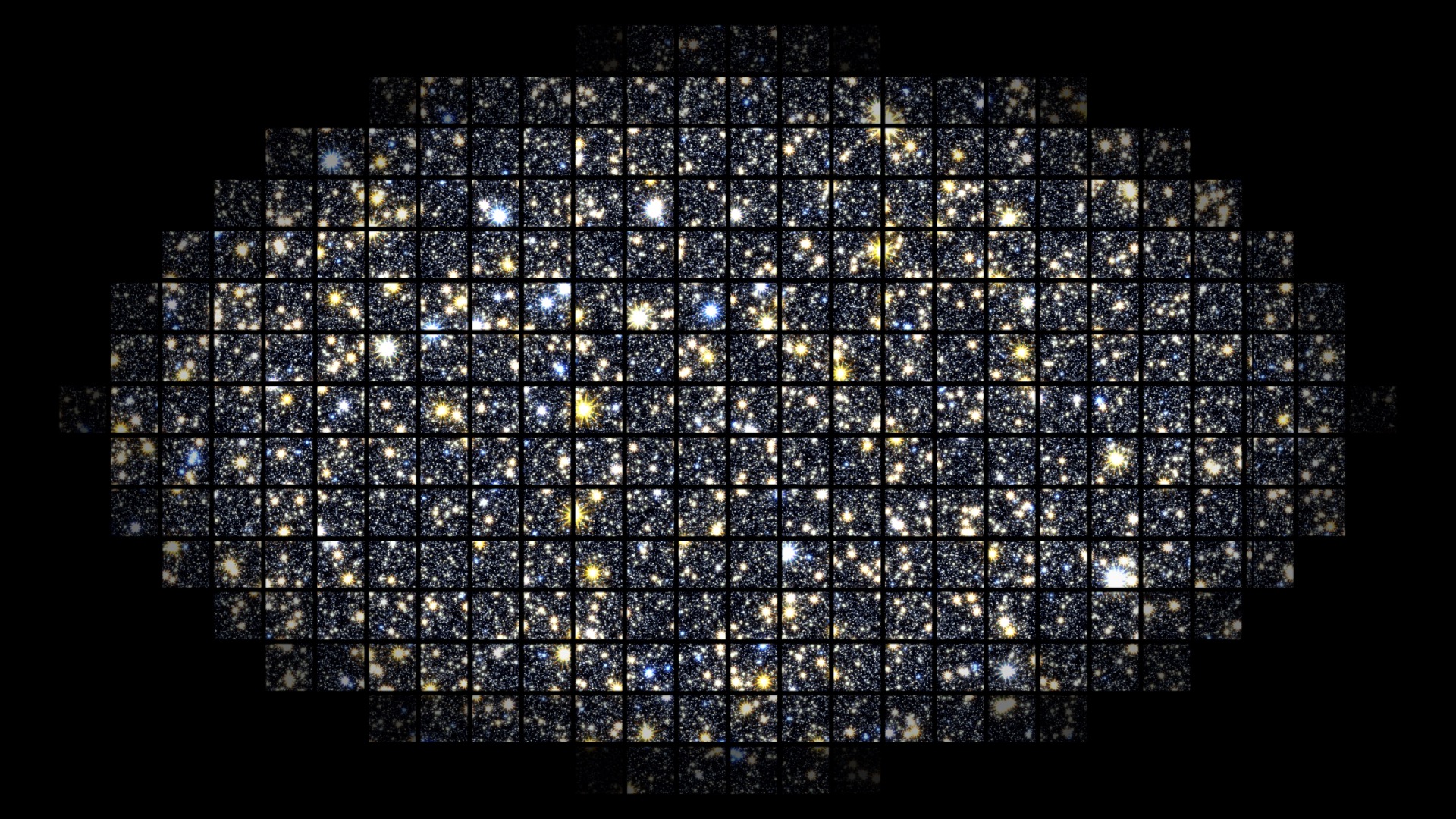Roman's Galactic Bulge Time Domain Survey Graphics
For the Galactic Bulge Time Domain Survey, Roman will aim its expansive view at the center of our galaxy and observe a two-square-degree region in infrared wavelengths that cut through the obscuring dust to reveal millions of stars.
Roman’s main objective in the Galactic Bulge Time Domain Survey is finding new planets and black holes. Astronomers anticipate that Roman could discover over 1,000 microlensing and 100,000 transiting planets from this survey alone. Observatories like the James Webb Space Telescope can then follow up with a narrower, more targeted view and learn key details about the most interesting discoveries.
Simulated image of a small portion of Roman's galactic bulge survey. This animation includes a tiling effect to illustrate that Roman will take a new image every 2 minutes for more than 62 days and then repeat this six times over five years for a total of 400 days of coverage.
Credit: NASA's Goddard Space Flight Center/Matthew Penny (Louisiana State University)
Credits
Please give credit for this item to:
NASA's Goddard Space Flight Center
-
Producer
- Scott Wiessinger (KBR Wyle Services, LLC)
-
Graphics
- Scott Wiessinger (KBR Wyle Services, LLC)
Missions
This page is related to the following missions:Series
This page can be found in the following series:Release date
This page was originally published on Wednesday, November 8, 2023.
This page was last updated on Thursday, November 16, 2023 at 10:46 AM EST.
